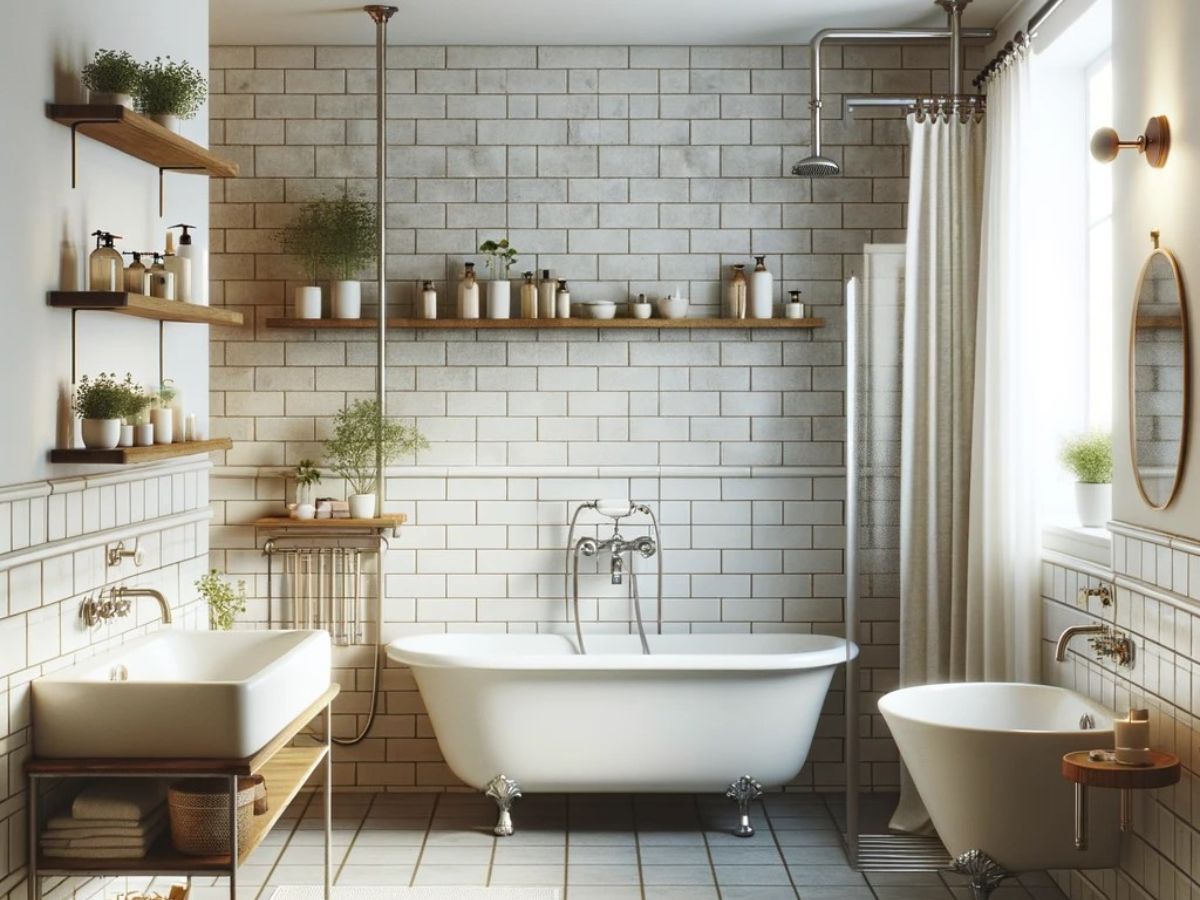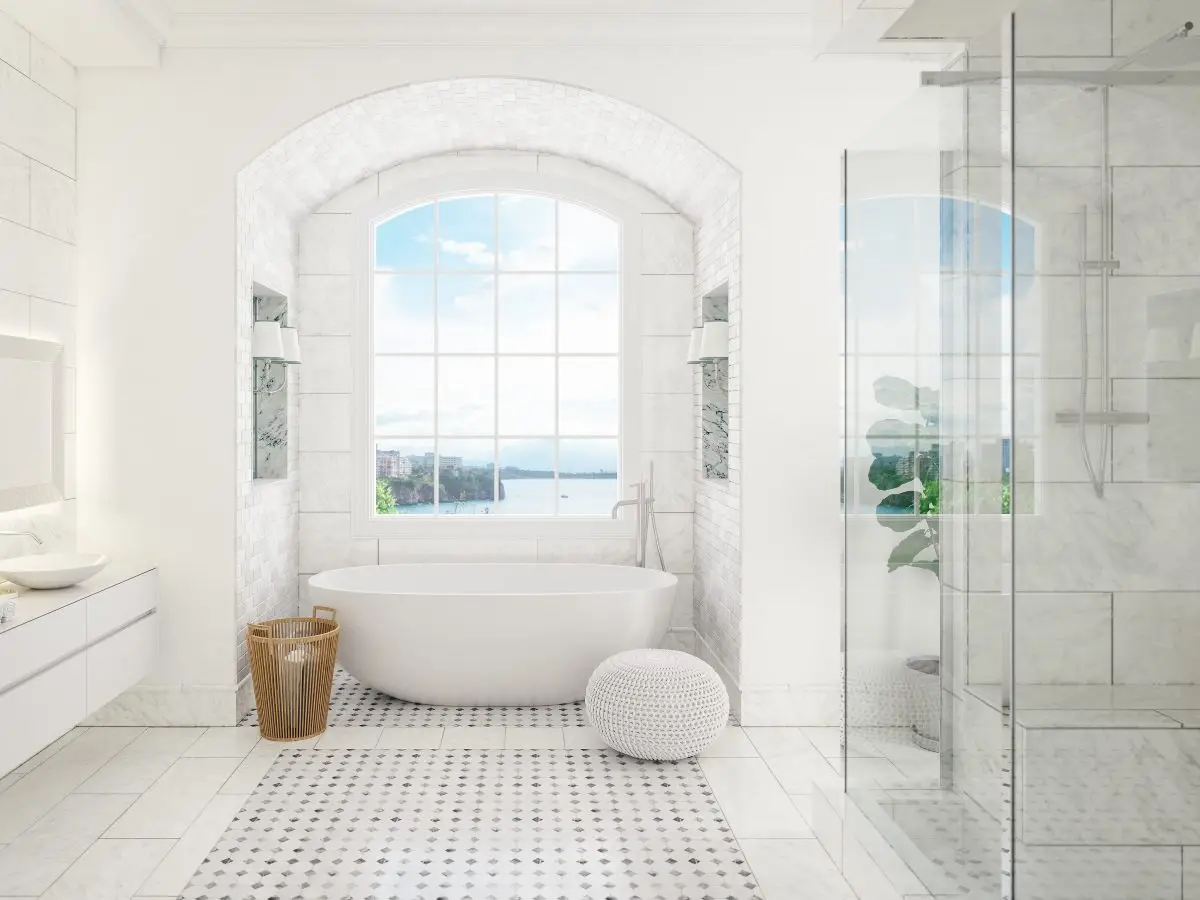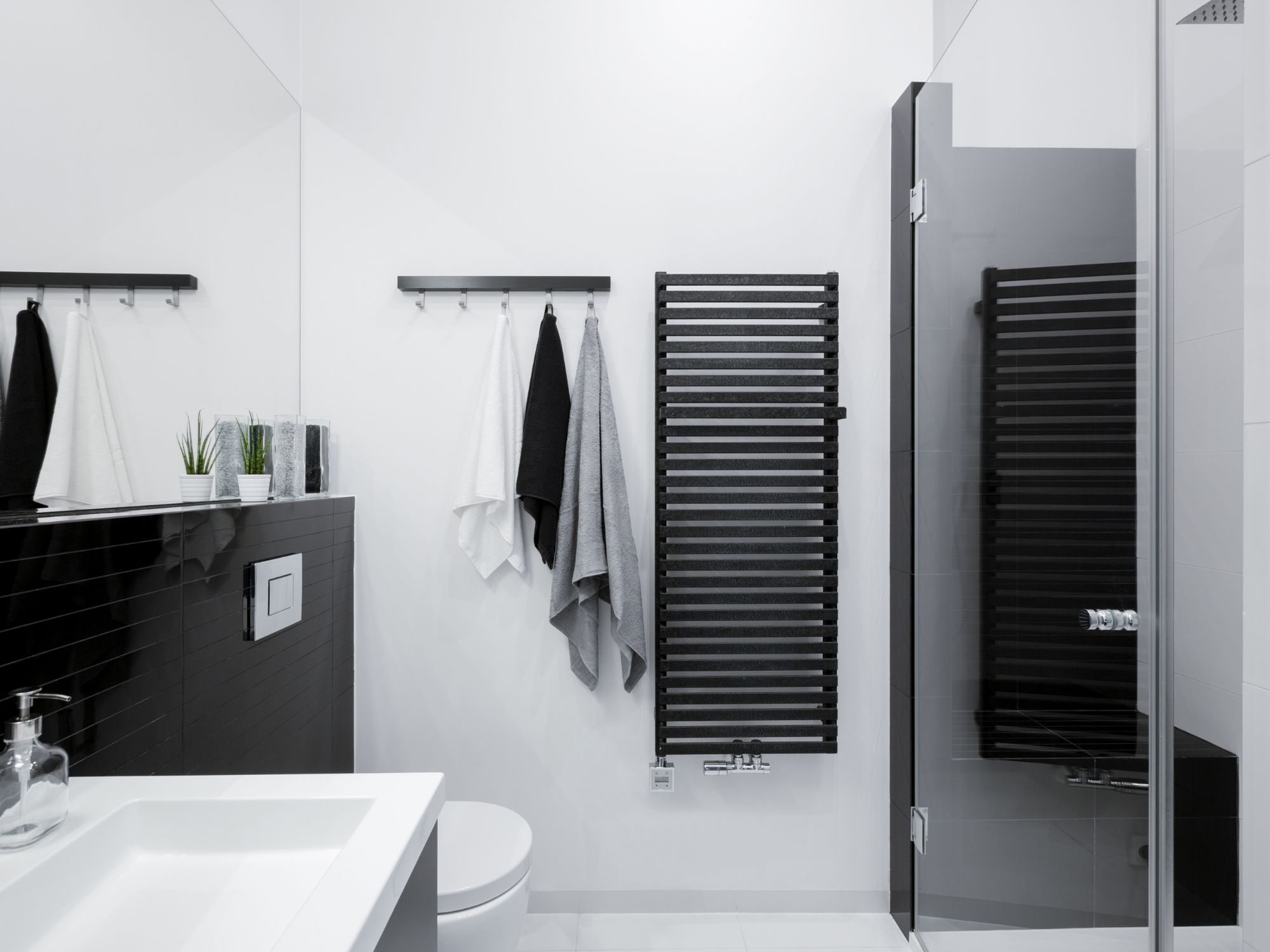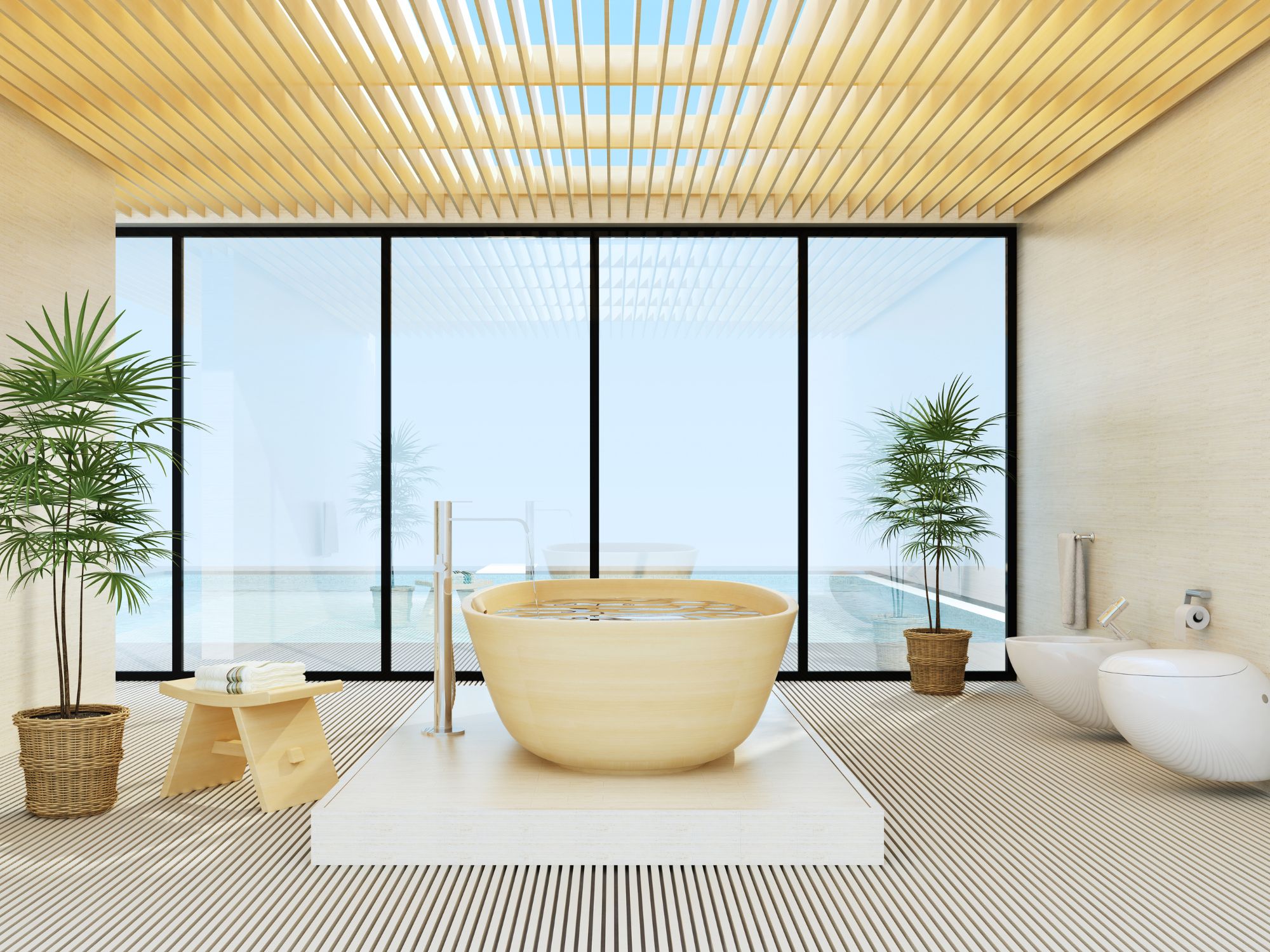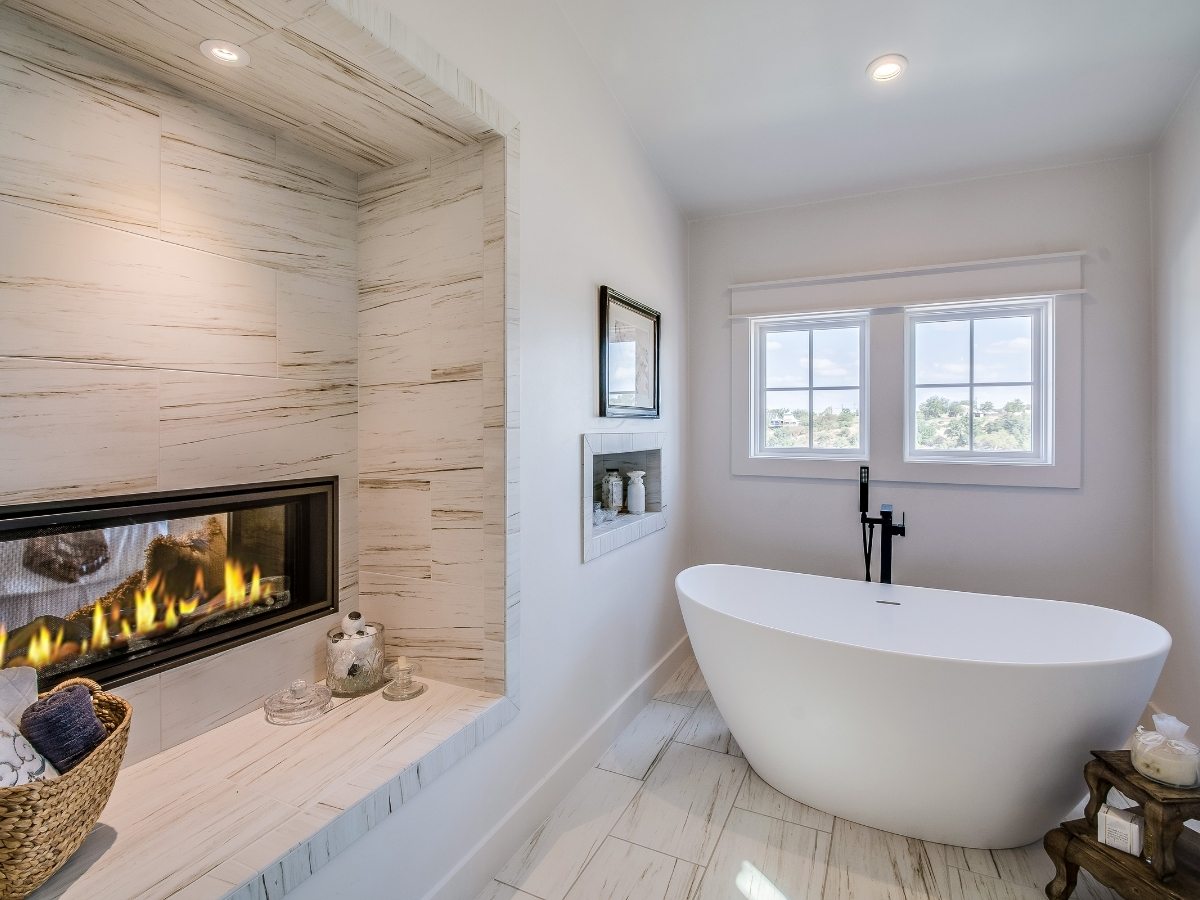This post may contain affiliate links which means I may receive a commission for purchases made through links. I only recommend products that I have personally used or curated specifically after reviewing and ensuring its quality! Learn more on my Private Policy page.
1. Remodeled Bathrooms FAQS
Remodeled Bathrooms can be both exciting and daunting. It’s a journey that not only transforms a functional space but also enhances the comfort and value of your home. This article is designed to navigate you through bathroom remodeling project considerations by providing responses to some frequently asked questions.
The article is the fifth of a five part series of articles – It is meant to provide responses to frequently asked questions as a guide and to point you in the right direction regarding remodel project duration, selecting the right materials, reviewing the design, reviewing modern trends and providing insights and practical advice to homeowners and investors.
The first article focused on compiling a Bathroom Remodel Cost Budget for your remodel project. In the second article we explored How Much Should You Spend on a Bathroom Remodel. The third article explored how Bathroom Remodeling enhances Investment Property Values and in the forth article we provided guidance on which Bathroom Remodel Features Favors Enjoyment Value verses Return on Investment.
Please read this article in conjunction with our other Blog Post Articles to review some key considerations and decision rules we identified which could help investors and home owners alike in making optimal bathroom remodeling decisions.
Whether you’re contemplating a minor update or a major overhaul, we addressed key questions like the necessity of permits, the order and duration of operations in a remodel, and the latest in bathroom design trends.
Bathroom Remodels – Images and Illustrations
The images presented throughout this article are not meant to be definitive designs. They are all generated illustrations developed for the purposes of inspiring you irrespective of your design or decor style and visioned outcome.
They are meant to thrust a jolt of design energy through you and thereafter you can take it in whatever direction you would like base on what your current layout and design outcome you wish to pursue.
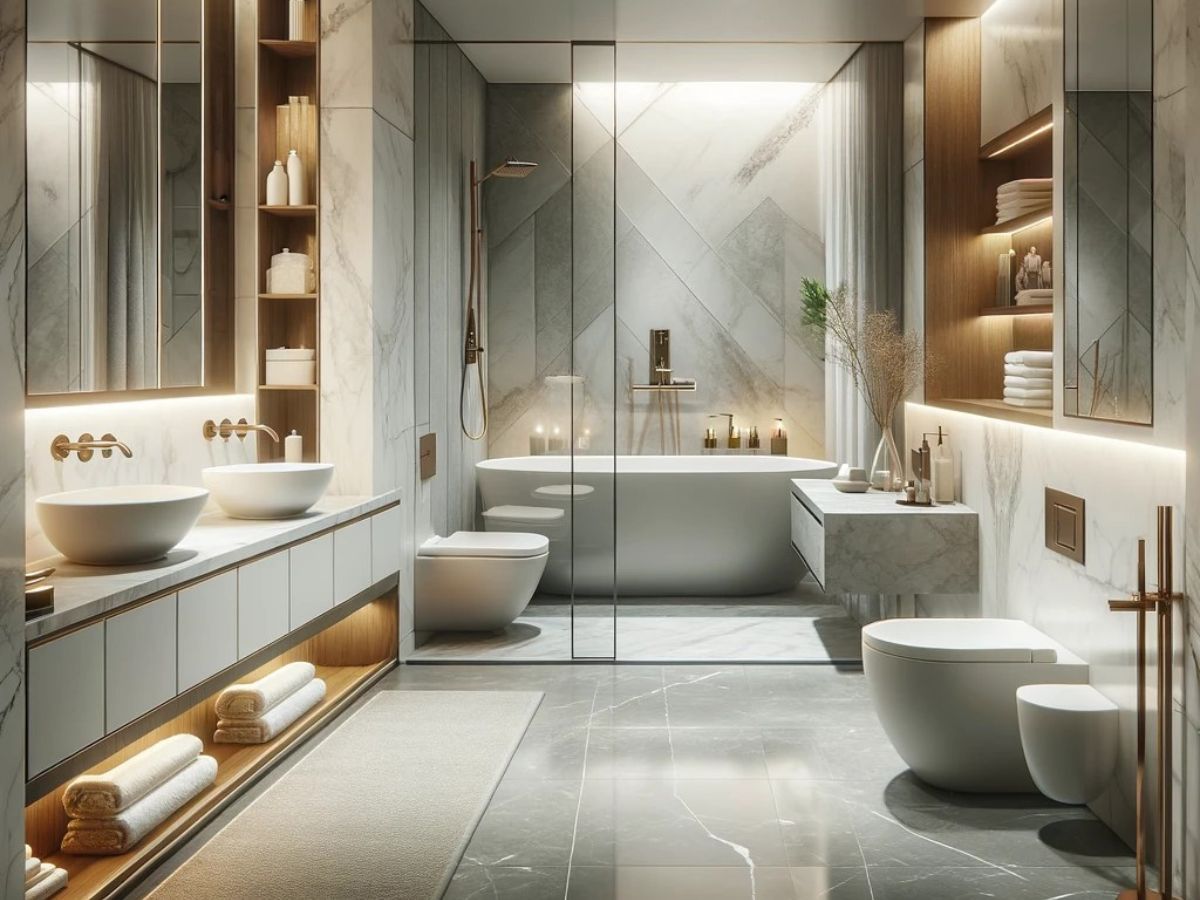
2. What are the Latest Trends in Bathroom Design?
Expanding on the latest trends in bathroom design, we observe a dynamic blend of aesthetic appeal and functionality that is shaping modern bathrooms. The current trends showcase a preference for bold colors and patterns, particularly in tiles, which bring a distinct personality to the space.
These aren’t just limited to the floor; eye-catching tile shapes and designs like hexagon, arabesque, and chevron are being used in backsplashes and shower walls to create bold accents. The use of wood accents is also on the rise, adding warmth and a classic touch to the modern bathroom.
Matte finishes for fixtures and hardware are gaining popularity, contributing to a sleek and contemporary look. This trend is part of a broader movement away from glossy finishes, favoring understated elegance.
Smart technology integration is increasingly evident in bathroom designs. Innovative lighting solutions are setting new standards, with customizable mood lighting and even ornate chandeliers transforming the atmosphere of the bathroom to suit different emotional needs.
The use of smart mirrors and digital showers is enhancing both functionality and luxury in the bathroom space.
Eco-friendly materials and water-saving fixtures reflect a growing consciousness towards sustainability. This trend is not only environmentally responsible but also cost-effective in the long run.
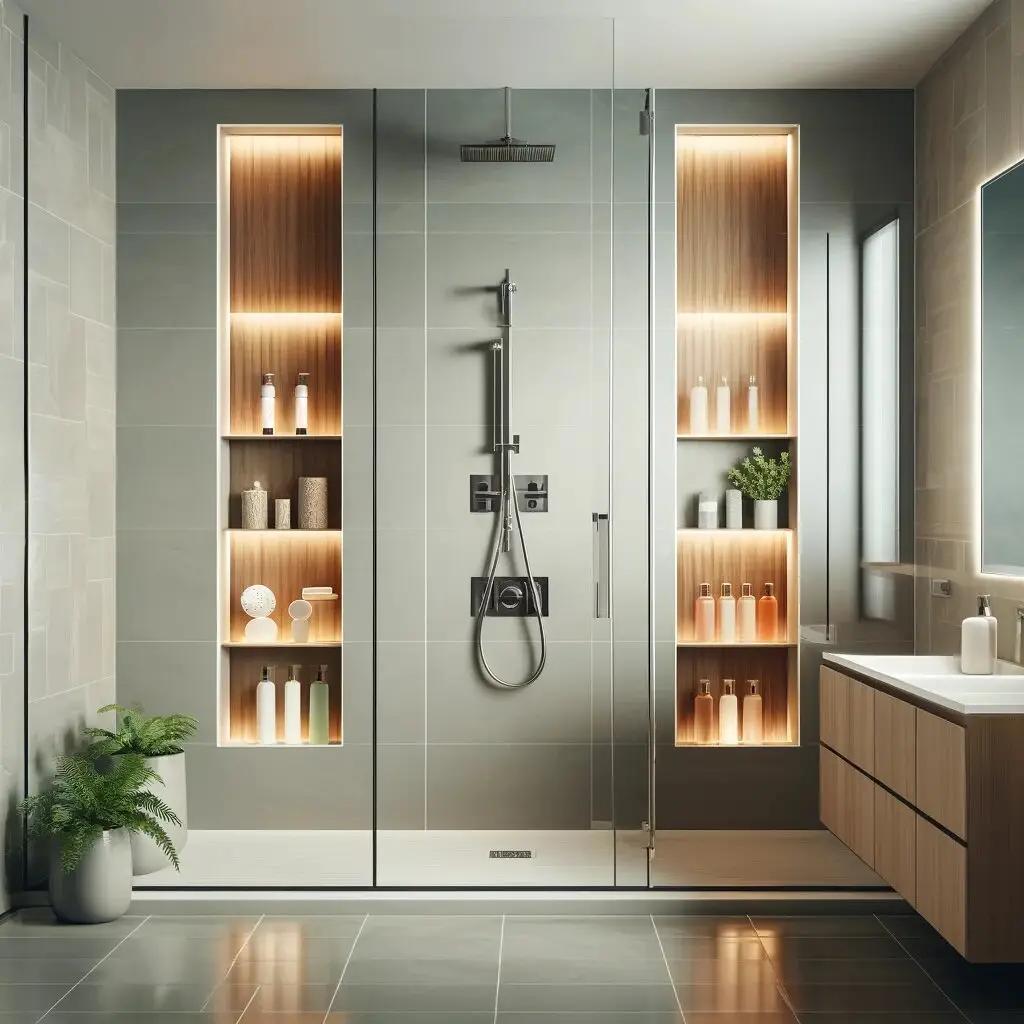
Spa-like elements are becoming more prevalent, with bathrooms transforming into personal retreats. Features such as double showerheads, multiple niches in showers for organized storage and organization, and floating benches are elevating the shower experience.
Bathtubs are evolving too, with the emergence of freestanding tubs equipped with smart controls and hydrotherapy features, providing a luxurious and therapeutic experience at home.
These trends indicate that the modern bathroom is no longer just a functional space; it’s evolving into a personal sanctuary that combines style, technology, and sustainability.
Table 1 – Bathroom Remodels – Trends and Design
.responsive-table { width: 100%; border-collapse: collapse; font-family: sans-serif; } .responsive-table th, .responsive-table td { border: 1px solid #CCCCCC; padding: 8px; text-align: left; } .responsive-table th { background-color: #e8e2db; font-size: 1.3em; } .responsive-table tr:nth-child(odd) { background-color: #f9f9f9; } .responsive-table tr:hover { background-color: #f1f1f1; } a { color: #0000ff; text-decoration: none; }| Trend | Description |
|---|---|
| Bold Colors and Patterns | Using vibrant colors and unique patterns, especially in tiles, to add personality and visual interest. |
| Matte Finishes | Matte finishes on fixtures and hardware for a modern, sophisticated look. |
| Smart Technology | Integration of smart technology like digital showers and smart mirrors for enhanced functionality. |
| Eco-Friendly Materials | Use of sustainable and eco-friendly materials and fixtures for environmental conservation. |
| Spa-Like Elements | Incorporation of elements like freestanding tubs and luxurious showers for a spa-like experience. |
| Natural Elements | Use of natural materials like wood and stone to create a warm, inviting ambiance. |
| Artistic Tiles | Tiles with artistic patterns and designs that serve as focal points in the bathroom decor. |
| Innovative Lighting | Creative and customizable lighting solutions that enhance the mood and atmosphere. |
| Mixed Textures | Combining different textures in materials to add depth and interest to the bathroom space. |

3. How Can I Make My Small Bathrooms Appear Larger?
Making a small bathroom appear larger involves several design and decorating strategies. Light colors, especially whites and pastels, can make the space feel more open and airy. Large mirrors can also create an illusion of depth, making the bathroom seem more spacious. Opting for a glass shower door instead of a shower curtain can open up the space visually.
Using the same tiles on the floor and walls can create a seamless look that expands the room. Good lighting is crucial; bright, well-placed lights can make a small bathroom feel larger and more inviting.
Lastly, minimizing clutter and using floating or open shelving can keep the space tidy and open.
4. What are Common Mistakes to Avoid in Bathroom Remodeling?
One common mistake in bathroom remodeling is inadequate planning and budgeting. It’s essential to have a clear plan and budget in place to avoid overspending and delays. Another mistake is overlooking ventilation, which is crucial in a bathroom to prevent mold and mildew.
Choosing the wrong materials that are not durable or suitable for wet environments can lead to premature wear and damage. Neglecting storage space is another common oversight; adequate storage is key to maintaining a functional and organized bathroom.
Finally, trying to do everything DIY without the necessary skills can result in poor quality work, safety issues, and might end up costing more in the long run if professionals need to redo the work.
5. How Do I Choose the Right Contractor for My Bathroom Remodel?
Choosing the right contractor is critical for a successful bathroom remodel. Start by seeking recommendations from friends, family, or online reviews. Once you have a list of potential contractors, check their credentials, including licenses, insurance, and professional affiliations.
Ask for a portfolio of their previous work to assess their expertise and style compatibility. It’s also important to get detailed, written estimates from multiple contractors to compare costs and scope of work.
Communication is key; ensure the contractor understands your vision and can communicate effectively throughout the project. Lastly, read reviews and check references to gauge their reliability and customer service record.

6. How Long Does a Bathroom Remodel Take?
The duration of a bathroom remodel depends on various factors including the size of the bathroom, the extent of the renovation, and the speed of work by contractors. Generally, a complete bathroom remodel can take anywhere from 3 to 12 weeks.
This timeframe includes phases such as design (1-4 weeks), ordering materials (1-8 weeks), and construction (2-5 weeks), followed by final touches and inspections. It’s important to note that unexpected issues such as plumbing or electrical problems, or delays in material delivery, can extend this timeline.
The various stages of the bathroom remodeling are as follows. These are approximate time frames and can vary based on the specific details of a project. The “Permit Approval” step duration is marked as “Varies” due to the different time frames required for permit processing in different regions and for different types of work involved in the remodel.
Table 2 – Bathrooms Remodeling Schedule
.responsive-table { width: 100%; border-collapse: collapse; font-family: sans-serif; } .responsive-table th, .responsive-table td { border: 1px solid #CCCCCC; padding: 8px; text-align: left; } .responsive-table th { background-color: #e8e2db; font-size: 1.3em; } .responsive-table tr:nth-child(odd) { background-color: #f9f9f9; } .responsive-table tr:hover { background-color: #f1f1f1; } a { color: #0000ff; text-decoration: none; }| Step | Description | Duration (Weeks) |
|---|---|---|
| 1. Start | Initiation of The Remodeling Project. | – |
| 2. Budgeting | Establishing A Budget For The Project. | 1-2 |
| 3. Design Planning | Creating A Design Plan For The Bathroom. | 1-4 |
| 4. Contractor Selection | Choosing The Right Contractor For The Project. | 1-3 |
| 5. Material Selection | Selecting The Materials For The Remodel. | 1-8 |
| 6. Permit Approval | Obtaining Necessary Permits. | Varies |
| 7. Construction Phase | Actual Remodeling Work. | 2-5 |
| 8. Final Inspection | Inspecting The Completed Work. | 1-2 |
| 9. Completion | Project is Completed And Ready For Use. | – |
7. When to Remodel a Bathroom?
The decision to remodel a bathroom can be influenced by various factors. Common reasons include outdated design, functional inefficiencies, or the need for repairs. Additionally, if you’re planning to sell your property, a bathroom remodel can increase its market value.
It’s also a good idea to consider remodeling if your bathroom doesn’t meet your current needs, such as requiring more storage space or better lighting.
8. Does Bathroom Remodel Require Permit in Most US States?
In most US states, a bathroom remodel may require a permit, especially for significant alterations that involve electrical, plumbing, or structural changes. The permitting process ensures that the renovation complies with local building codes and safety standards. It’s crucial to check with your local building department to understand the specific requirements in your area.
Remember, working without necessary permits can lead to legal issues and complications in selling your property in the future.
9. When Renovating a Bathroom, Where to Start?
The first step in renovating a bathroom is to plan and design. This involves determining your needs, preferences, and budget. It’s essential to have a clear vision of what you want to achieve with the remodel. Consider factors like layout, fixtures, lighting, and color schemes.
Consult with a professional contractor or designer to help you develop a realistic plan that aligns with your goals and budget.
10. What Is the Order of a Bathroom Remodel?
A typical order for a bathroom remodel would start with design and planning, followed by demolition of the old bathroom. Next comes the rough-in phase for plumbing and electrical, followed by framing, installation of windows and doors, and drywalling.
After that, tiling, painting, and installation of fixtures like sinks, toilets, and showers take place. The final steps include finishing touches, adjustments, and inspection.
Please refer to our Blog Post Article – Bathroom Remodel Cost: Essential 2024 Guide to Budgeting Smart to review the three categories of bathroom remodeling and cost ranges.
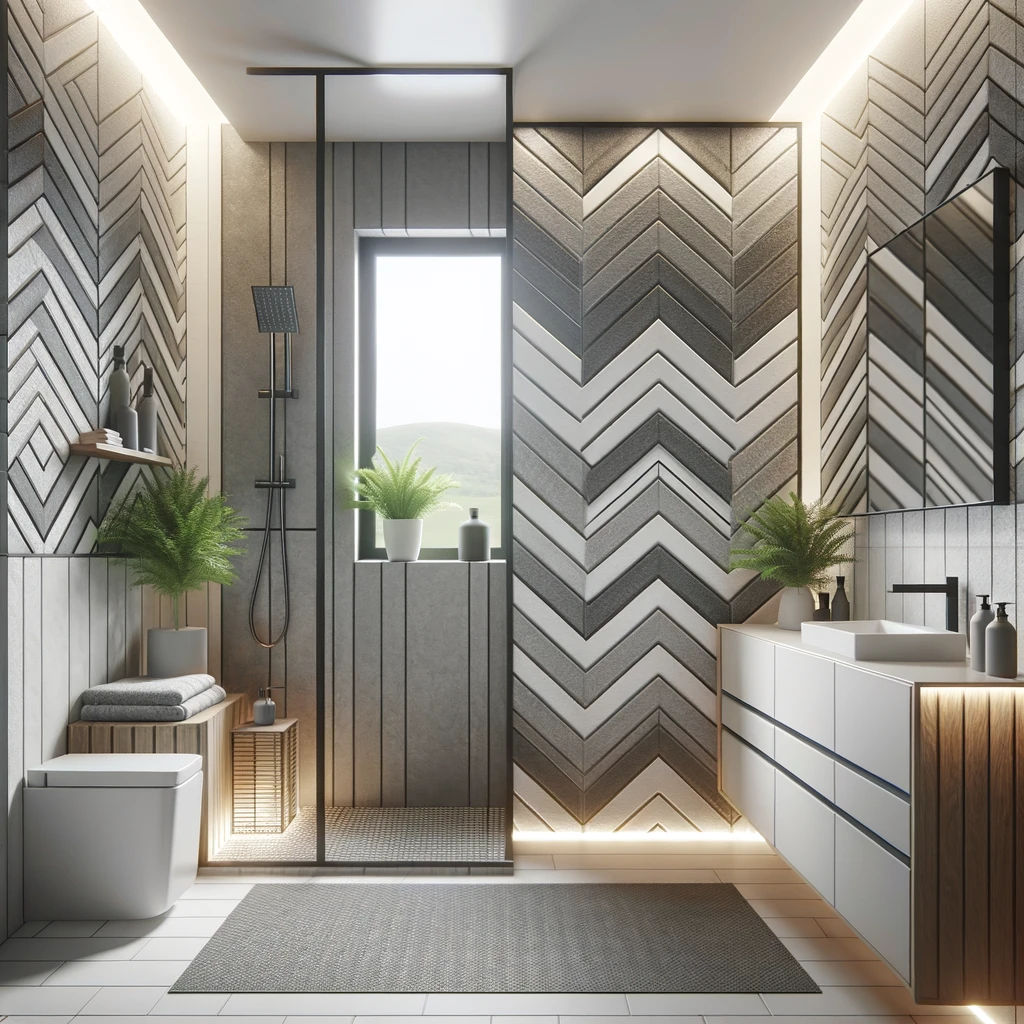
11. What to Expect When Remodeling Bathrooms?
When remodeling a bathroom, expect a sequence of stages as note in Table 2 above, each requiring different work and time. It starts with planning and design, followed by demolition, construction, and installation of various elements.
Be prepared for noise, dust, and some disruption to your daily routine. Budgeting for unexpected costs and delays is also prudent, as renovations can often uncover additional issues that need addressing.
12. How To DIY Bathroom Remodel?
A DIY bathroom remodel involves handling various tasks like demolition, constructing, plumbing, electricals, painting, and installing simple fixtures. If you have basic home improvement skills, you can undertake some parts of the remodel to save on labor costs.
However, please note that complex tasks such as plumbing and electrical work are best left to professionals and may require inspection to meet home insurance requirements should there be a claim arising from electrical or plumbing defects.
It’s important to research thoroughly and prepare yourself with the right tools and knowledge before starting a DIY remodel.
13. What Is The Bathroom Remodel Grant?
A bathroom remodel grant refers to financial aid provided by government programs or non-profit organizations to assist homeowners with remodeling costs. These grants are often targeted towards low-income households, seniors, or individuals with disabilities to improve accessibility and safety in the bathroom.
Eligibility and availability of such grants vary by location and specific program criteria.
14. What Are the Disadvantages of a Walk-In Shower?
While walk-in showers are stylish and accessible, they have some disadvantages. They may not be ideal for families with small children due to the lack of a bathtub. Also, water can splash out of walk-in showers more easily, potentially leading to wet bathroom floors, but that may not be a problem base on the design of the shower or wet area.
Additionally, walk-in showers typically require more extensive and expensive installation than traditional shower/tub combinations.
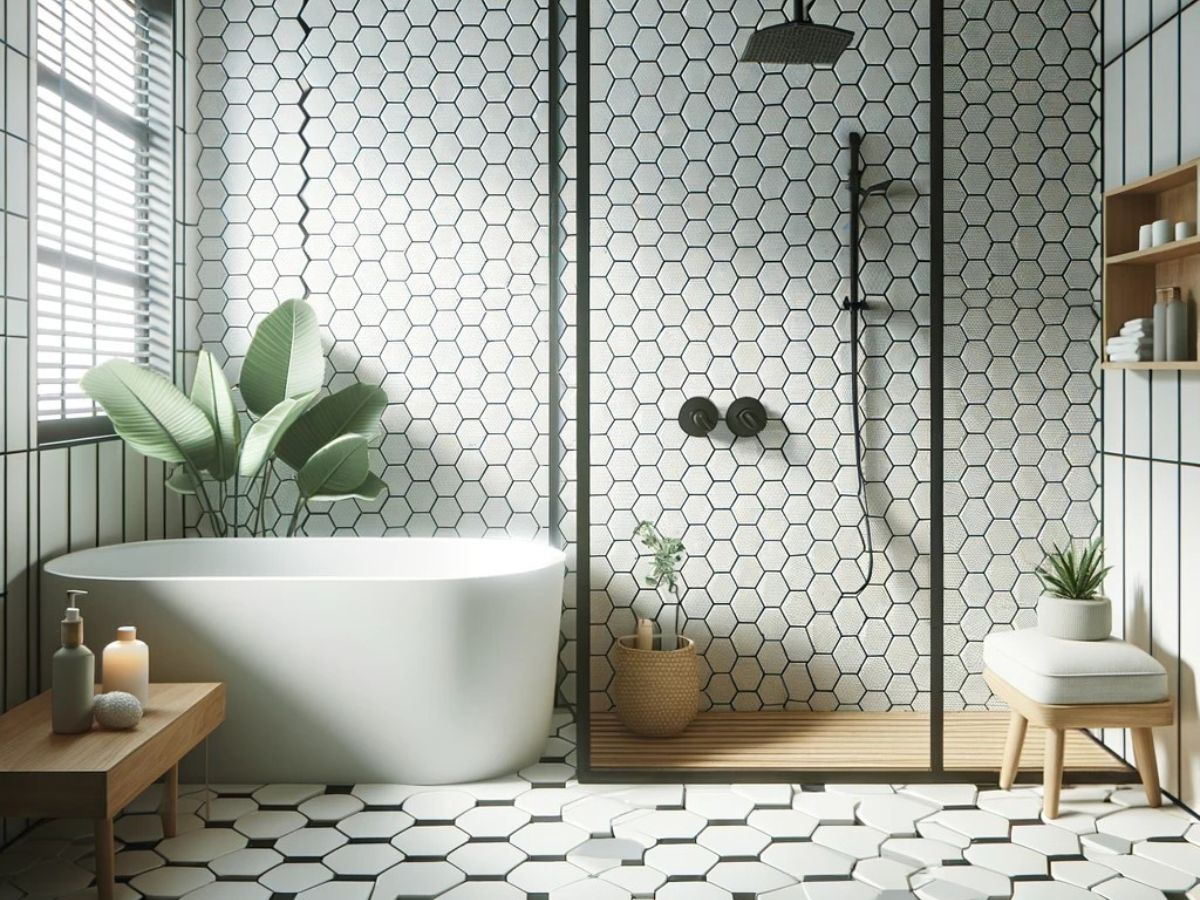
15. Does a Walk-in Shower Add Value?
A walk-in shower can add value to a home, especially in markets where modern, accessible designs are in demand. They are particularly appealing in homes targeted towards older adults or those with mobility issues. Walk-in showers also provide opportunity to keep the bathroom space contiguous especially if there is a freestanding bath tub within the same space.
However, the added value depends on the overall housing market and buyer preferences in your area.
16. What Shower Material Is Best for Resale?
For resale purposes, durable and timeless materials like ceramic or porcelain tiles are often recommended for showers. These materials are not only long-lasting but also offer a wide range of design options, making them appealing to potential buyers.
Based on where you live we have provided a list of suppliers of these materials for your review.
17. Are Bathroom Upgrades Worth It?
Bathroom upgrades can be worth it, especially if they improve the functionality, aesthetics, or energy efficiency of the space. They can also increase the overall value of your home, making them a worthwhile investment, particularly if you plan to sell your property.

18. What Color Bathroom Increases Home Value?
Choosing the right color for a bathroom can significantly impact the perceived value of a home. Neutral colors like white, beige, or light gray are generally considered the best choices for increasing home value.
These colors are widely appealing, make spaces appear larger and brighter, and offer a clean and modern look. It’s essential to select a color that complements the overall style of your home and appeals to a broad range of potential buyers.
19. What Adds the Most Value to a Bathroom?
The elements that add the most value to a bathroom are those that improve its functionality and aesthetic appeal. This includes updating fixtures such as sinks, toilets, and showers, installing modern lighting, and improving storage solutions.
Quality flooring and wall tiles, especially in neutral and timeless designs, also add significant value. Features that enhance comfort, like heated floors, can be a selling point. Ultimately, a well-designed, functional, and visually appealing bathroom will contribute the most to increasing a home’s value.
20. What Makes a Shower Luxurious?
The essence of luxury in modern showers is characterized by not only spaciousness and high-quality materials but also by a fusion of advanced features and elegant design elements.
The latest trends in luxury showers include incorporating multiple showerheads, offering a range of experiences from rainfall to handheld sprays. These multi-functional shower systems often include LED lighting, which changes color with temperature, adding a visually soothing aspect to the shower experience.
There are notable brands with LED waterfall rainfall shower systems that combine both aesthetics and functionality.
In terms of design and materials, there is a growing emphasis on using natural elements and textures. Wood accents, for example, are being used to create a warm and inviting ambiance within the shower space. These natural tones contrast beautifully with modern fixtures, blending rustic charm with contemporary elegance.
Moreover, luxurious showers are increasingly featuring artistic elements like resin epoxy accent walls or mosaic glass tile accents, turning the shower space into a canvas of creativity and style.
Sophisticated technological integrations are a significant aspect of modern luxury showers. Systems like the Gessi Private Wellness line and the Grohe F-Digital Deluxe offer customizable settings for water temperature, pressure, and steam, along with app-controlled options for a truly personalized shower experience.
These advanced systems blend seamlessly with various bathroom aesthetics, offering a spa-like luxury at home.
In summary, the luxurious shower of today is much more than a space for routine. It’s a personal sanctuary that combines the soothing touch of nature with the sophistication of modern technology and design.
From the gentle caress of rainfall showerheads to the immersive experience of color-changing LED lights and the elegance of natural materials, these showers offer a daily retreat, rejuvenating both the body and the mind.
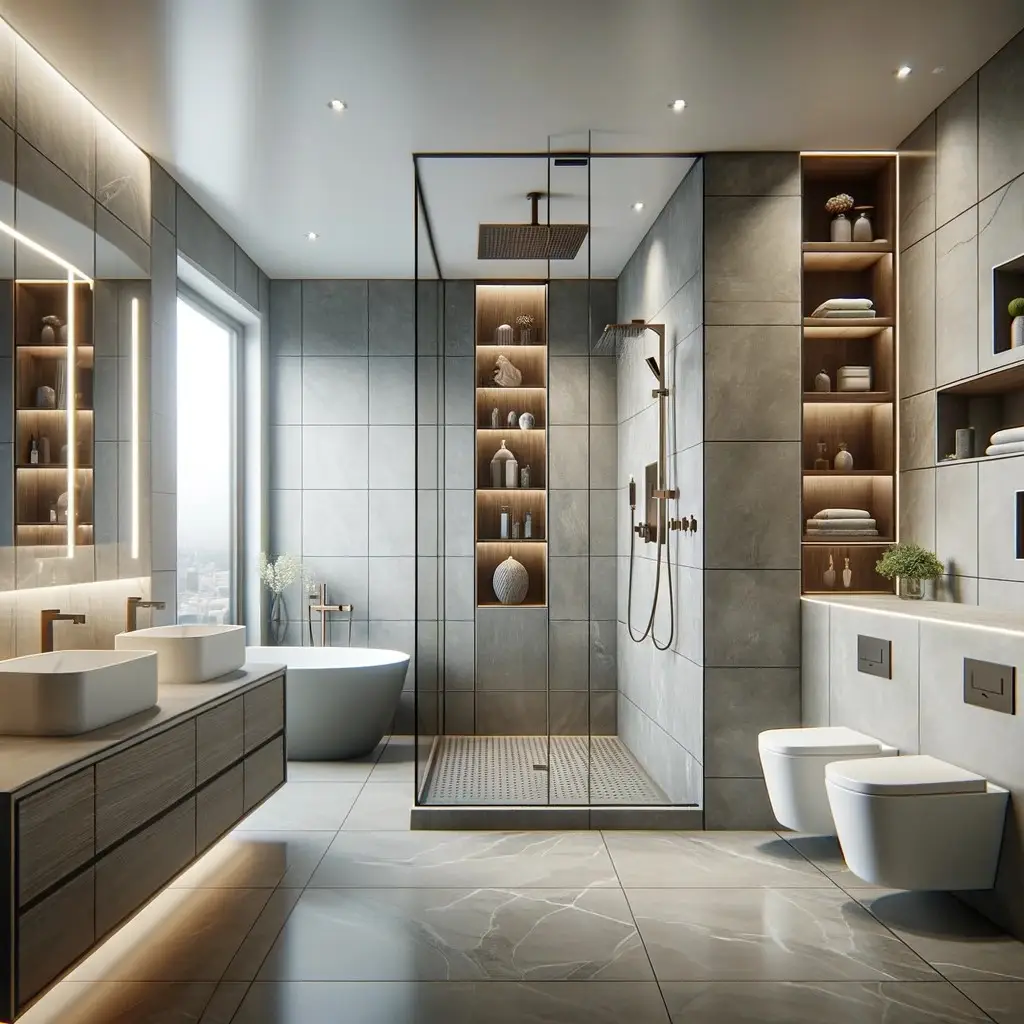
21. Should I Replace My Tub with a Walk-In Shower?
Deciding to replace a tub with a walk-in shower depends on your lifestyle, needs, and the potential impact on home value. Walk-in showers are popular for their accessibility and modern look, making them a desirable feature, especially in homes targeting older adults or those with mobility issues.
However, if your home only has one bathroom, keeping a tub might be beneficial for families with children or for resale purposes where a tub is preferred by buyers. Consider your target market and personal needs before making this change.
22. Is It Better to Have a Tub Shower or Walk-In Shower?
Choosing between a tub shower and a walk-in shower depends on personal preference, space, and functionality. Tub showers are versatile, making them ideal for families with young children or for those who enjoy baths.
Walk-in showers, on the other hand, offer easy accessibility and are often preferred for their sleek and modern design. They can also make a bathroom appear larger. Evaluate your lifestyle, the needs of potential buyers (if considering resale), and bathroom space before deciding.
Each of these responses is designed to provide an understanding of the aspects related to bathroom remodeling, from the duration and planning to the impact on home value and choices in fixtures and design.
The information provided is based on general industry standards and practices, aiming to offer valuable insights for anyone considering a bathroom renovation.
